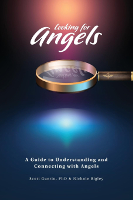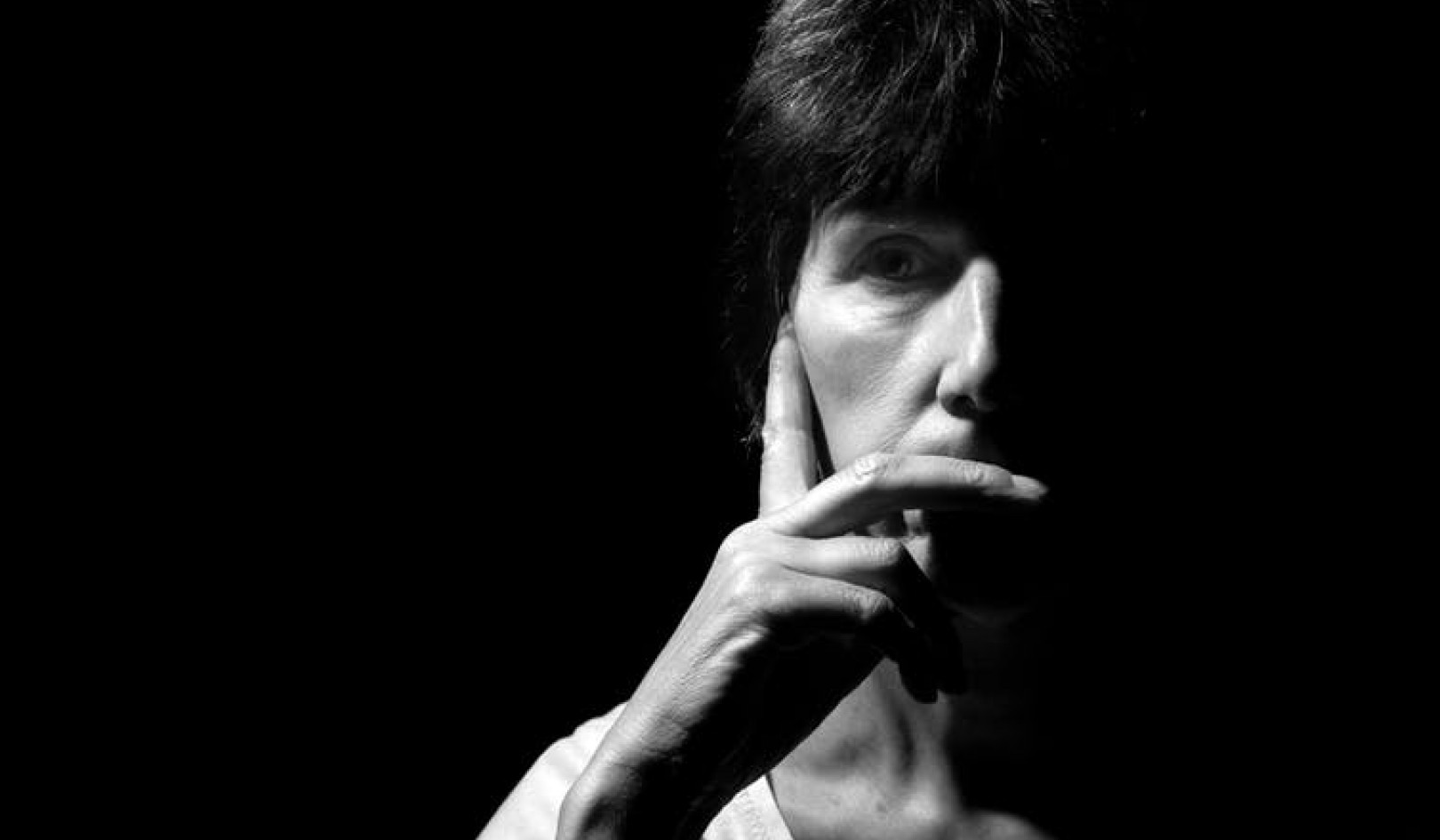
Image by Sabine van Erp
In this Article:
- What Buddhism teaches about life as an illusion.
- How do Buddhist concepts challenge our perception of reality?
- How does meditation help reveal the truth about illusion and reality?
- Are Buddhist devas and bodhisattvas the same as angels in other faiths?
How Buddhism Explains the Illusion of Life
by Scott Guerin and Nichole Bigley.
“Life is an illusion, a dream—a bubble—a shadow. ...
Nothing is permanent.
Nothing is worthy of anger or dispute.
Nothing.”
—The Buddha
My introduction to Buddhism came from a chance encounter with a Buddhist woman at work years ago; it jarred me from my grip on conservative Christian beliefs. She was a freelance writer hired to work on a few projects that day. When she mentioned she was a Buddhist, I was ready to pounce and point out all the holes in her faith, as I had learned to do in the groups and retreats I had attended. But this time, I listened more than I talked, amazed at how deeply she felt about her religion.
She told me how she was raised as a Buddhist but was also taught about other religions, including Christianity. She described the altar she had in her home, where she went to read and meditate. She told me how she relied on her Buddhist scriptures throughout her life because they conveyed stories of how other believers overcame suffering and pain.
Even though it was brief, the conversation had a huge impact on me. I was stunned that someone could feel as strongly about their religion and have as deep a personal connection as I did to mine.
I did not see that Buddhist woman again; I never got her name. No one at work knew anything about her, and most did not notice she was there that day. A few years later, when I was recovering from my long-held narrow beliefs about God, I remembered our conversation. I spent much time learning about this fascinating faith and immersed myself in the practice of meditation.
Buddhism: A Philosophy?
I learned that Buddhism was founded in India by Siddhartha Gautama (the Buddha) more than 2,500 years ago, in 500 BC. With nearly 500 million followers, Buddhism is one of the major world religions and/or philosophies. The reason for the “and/or” is that there is much debate about whether Buddhism is a religion, philosophy, thought tradition, or some combination.
On the philosophical side, Buddhism does not identify a deity, god, or ultimate supreme being to worship. Siddhartha was a man who left his home to find answers to profound questions related to the meaning of suffering and how we can eliminate it in our lives. After years of experimenting with various religious practices, he deserted his ideas about his spiritual journey and found his answers by obtaining enlightenment or nirvana.
Siddhartha taught that enlightenment means that a person is able to understand what is temporary in life, enabling them to see the true nature of things and then free themself from suffering. A good analogy would be the feeling experienced in meditation. With some practice, anyone can learn to quiet the mind, usually by observing one’s breath.
Observing Everything
I have had the opportunity to be trained in a meditation technique that comes from the Buddha’s original teachings, called Vipassana meditation. This practice is taught during ten-day silent retreats, and participants spend hours practicing how to quiet their minds and begin to look at the world without being affected by it.
A key idea that comes up in this training is to “simply observe” everything in life and yourself. It took some time to start to experience this, but when I could, I found it forced me to view everything without judgment and accept all that is. Siddhartha and others achieving enlightenment are able to expand this perspective to a very deep level—beyond their lives, even past lives—to experience a transcendent freedom that is beyond anything we can imagine.
Buddhism: A Religion or a Science?
According to a widely respected teacher in the Vajrayana School of Buddhism, Dzogchen Ponlop Rinpoche, “Buddhism can be practiced as a religion, but that’s not what the Buddha taught. The difference is in the investigation—as opposed to the faith—that you bring to it.”
Rinpoche suggested that Buddhism is a science of the mind—exploring how we think, feel, and act leads us to understand who we are. It is a philosophy of life, a way to live to increase our chances for happiness.
On the religious side of the debate, Dr. Charles S. Prebish, associate professor of religious studies at Pennsylvania State University, explained that Buddhism offers an ultimate reality like nirvana or Buddhahood that prompts a personal transformation.
According to his definition, “A religion is a philosophy that posits an ultimate reality, a path towards experiencing ultimate reality, and the potential for personal transformation. Buddhism checks all those boxes.” Admittedly, Dr. Prebish stated that part of the disconnect in these discussions is that not everyone uses the same standards or criteria in their definitions.
Joan Sutherland, a Zen Buddhist teacher in New Mexico, offered an interesting response to this debate. Her answer to the religion or philosophy question is a definitive “Yes-no-kind-of.” She explained, “If there’s a sacred text in Buddhism, it is the world itself. Your attachment to that text can be as religious as you like—but the resultant awakening may shake your faith.”
Buddhism and Angels
Buddhism holds a much different perspective of angels than the Judeo-Christian, Islamic, or Hindu faiths, mainly because, in Buddhist thinking, everything we see and experience is an illusion, a projection of our own consciousness.
As the Buddha said, “Life is an illusion, a dream, a bubble, a shadow. ... Nothing is permanent. Nothing is worthy of anger or dispute. Nothing.” This is not to say that nothing is real; the illusions are what we project on reality and, as a result, are our source of suffering.
Buddhism and Illusion
Buddhist scholar John Lee Pendall, co-owner of The Tattooed Buddha publication, described the following illusion: it is like being in a dark room and, in the corner, you see a snake, coiled and ready to strike. You become frightened, thinking the snake may be venomous and may lunge at you at any moment. Then someone else enters the room, sees your concern, and tells you this is not a snake, but a rope coiled in the corner. They walk over and kick the rope to prove you were mistaken.
In that scenario, the fear was real enough when you thought the rope was a snake. To the mind, there was a snake in the room, and you reacted as if there was. So, by all standards, that snake was real to you.
This is true for all the fear, fortitude, sorrow, joy, suffering, and pleasure we experience in life. A “mind-made world” means that the mind projects views and perspectives onto whatever it experiences.
In other words, Buddhism teaches that the way things appear to us is not the way they truly are. Focusing only on what appears to us (our physical surroundings and time, composed of past, present, and future) is the cause of our suffering.
The practices of contemplation and meditation taught by the Buddha help us question what we are experiencing and free us to gain insight into the way things really are. It’s like being in the middle of a frightening nightmare and then awakening from your dream, or the relief that comes when you realize a snake is simply a rope.
Buddhist Concept of Reality
Since the Buddhist concept of reality is based on how a person perceives the world, angels or angel-like entities fall firmly into a subjective category. As a result, there are no concrete definitions, descriptions, or stories of angels, as in the Judeo-Christian or Muslim traditions. Ajahn Sumedho, a senior Western representative of the Thai Forest Tradition of Theravada Buddhism, bluntly stated in a recent dharma talk that angels are portrayed to be beautiful, playing harps, living in heaven forever. But according to Sumedho, these ideas are thoughts that we create, stemming from religious traditions.
When asked what Buddhist angels are like, Sumedho stated, “One is an old person, one is a sick person, one is a dead person, one is a monk meditating under a tree.” This statement is interesting because it aligns exactly with the Four Signs that Siddhartha encountered, which motivated him to leave his life of luxury and pursue a path of enlightenment. Those four signs were an old man, a sick person, a corpse carried to cremation, and a monk in meditation beneath a tree.
Are Devas the Same as Angels?
The word angel is rarely seen in Buddhist texts. However, nonhuman entities are identified as devas, which can be considered a close match. These beings are invisible to most humans and live in different realms of the universe. However, some people who have opened their divine eye (called divyacaksu) may be able to see them. In the Western world, some refer to this as the third eye or mind’s eye.
Devas have achieved their positions as a result of positive karma from lifetimes of acts of generosity, meditation, and asceticism. Once they have used up their positive karma, they return to lower levels of existence.
From reading through numerous references, texts, blogs, websites, and lectures, I believe it is fair to say that, with few exceptions, traditional Buddhism teaches that whatever positions devas have or wherever they live, they have no role in human lives or Buddhist practice.
Is A Bodhisattva an Angel?
One other category worth noting is that of the bodhisattva. This is someone who has vowed to pursue awakening to become a buddha or is “bound for enlightenment.” Descriptions of bodhisattvas range from “great mythical figures” to supernatural beings.
The Lotus Sutra, one of the most prominent and respected Buddhist Mahayana sacred texts, describes the bodies of bodhisattvas similarly to the way angels are described in other religious traditions, as “golden in hue, with thirty-two features and an immeasurable brightness. ... Such were they, then, immeasurable, boundless, beyond anything that can be known through calculation, simile, or parable.”
These descriptions portray bodhisattvas as something more than humans, as further emphasized by Sheng Yen, a Taiwanese Buddhist monk and religious scholar, who stated that we must “transcend ourselves and transform ourselves from ordinary sentient beings to Bodhisattvas.” However, as with any ancient and vast tradition, there is much variability in definitions.
Are You a Bodhisattva?
Kosho Uchiyama, a Soto priest, abbot of Antai-ji, and author of more than twenty books on Zen Buddhism, wrote that a bodhisattva is an ordinary person who moves in the direction of the Buddha and that “you and I, actually, anyone who directs their attention, their life, to practicing the way of life of a Buddha is a bodhisattva.”
One common theme across all definitions and descriptions of bodhisattvas is that they have put their own spiritual path on hold to help all sentient beings achieve liberation, freedom, and enlightenment.
Copyright 2023. All Rights Reserved.
Adapted with permission.
Article Source:
BOOK: Looking for Angels
Looking for Angels: A Guide to Understanding and Connecting with Angels
by Scott Guerin and Nichole Bigley. Through true stories, data and insights, and expert tips, this book is an invaluable tool for anyone interested in learning more about these divine beings, as well as how to connect and communicate with them.
Through true stories, data and insights, and expert tips, this book is an invaluable tool for anyone interested in learning more about these divine beings, as well as how to connect and communicate with them.
Whether you are a true believer, a healthy skeptic, or somewhere in between, Looking for Angels: A Guide to Understanding and Connecting with Angels will help you do just that. Written by Dr. Scott Guerin and renowned intuitive Nichole Bigley, this book shares the history of angels throughout religion, science, and psychology and provides detailed instructions to learn how to connect with your spirit team.
For more info and/or to order this book, click here. Also available as an Audiobook.
About the Authors
 Scott Guerin is a distinguished author, educator, and retired healthcare professional with two master’s degrees and a doctorate in human development with a focus in spiritual development. His popular Angel in Training series describes how society has begun to shift from organized religion to spirituality. Scott’s twenty-three-year tenure as an adjunct professor in psychology at Kean University in New Jersey allows him to impart wisdom and knowledge to countless eager minds, helping them foster a deeper understanding of human psychology and spirituality.
Scott Guerin is a distinguished author, educator, and retired healthcare professional with two master’s degrees and a doctorate in human development with a focus in spiritual development. His popular Angel in Training series describes how society has begun to shift from organized religion to spirituality. Scott’s twenty-three-year tenure as an adjunct professor in psychology at Kean University in New Jersey allows him to impart wisdom and knowledge to countless eager minds, helping them foster a deeper understanding of human psychology and spirituality.
To learn more about Scott or take his free spiritual course, Where Are You In Your Spiritual Journey?, visit angelintraining.org.
 Nichole Bigley has been transforming lives for the last twenty-three years, including her own. She helps thousands of people worldwide, each year, teaching them how to connect with the Divine and discover and lean into their life purpose. In addition to conducting intuitive sessions and creating content for and hosting her three podcasts, Nichole is currently working to launch spiritual courses and retreats and go on speaking tours designed to motivate and inspire others to find and embrace their truths. Discussions with networks and streaming services are also underway on several TV show concepts.
Nichole Bigley has been transforming lives for the last twenty-three years, including her own. She helps thousands of people worldwide, each year, teaching them how to connect with the Divine and discover and lean into their life purpose. In addition to conducting intuitive sessions and creating content for and hosting her three podcasts, Nichole is currently working to launch spiritual courses and retreats and go on speaking tours designed to motivate and inspire others to find and embrace their truths. Discussions with networks and streaming services are also underway on several TV show concepts.
To learn more about Nichole, visit apsychicsstory.com.
Article Recap:
This article explores the Buddhist concept that life is an illusion, challenging our conventional understanding of reality. By reflecting on teachings from Siddhartha Gautama (the Buddha), the article explains how Buddhist meditation practices help us see beyond illusions and recognize the true nature of reality. We also examine how Buddhism views non-human entities like devas and bodhisattvas, and how they fit into the broader discussion of illusion and reality. Through meditation and contemplation, Buddhism offers a path to enlightenment and freedom from suffering.




























